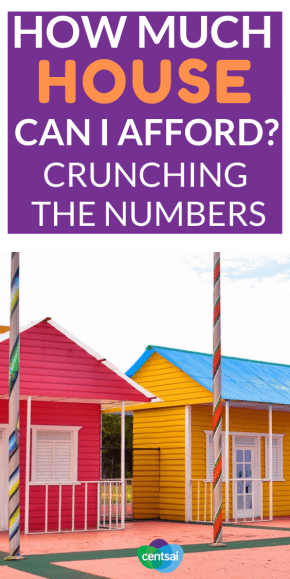 Owning a home is a huge part of the traditional American dream. Buying one has become easier recently, thanks to nearly record-low interest rates on 30-year fixed mortgages.
Owning a home is a huge part of the traditional American dream. Buying one has become easier recently, thanks to nearly record-low interest rates on 30-year fixed mortgages.
If you’re thinking of buying a house in the next few years, you’ve probably looked up prices so that you can start saving up money for a down payment and closing costs. Unfortunately, one factor could make your dream home unaffordable if you wait too long to buy: mortgage rates.
Figuring Out How Much House You Can Afford
When my wife and I were considering buying a home, we used a mortgage payment calculator. We plugged in the purchase price, down payment, and interest rate to see what payment popped up. From that, we determined whether we could afford the mortgage. We played with the numbers a bit to see what we could comfortably afford.
We were pleasantly surprised by how much house we could afford in the low-interest-rate environment.
Unfortunately, interest rates may start rising soon. If they increase, your buying power will go down — maybe a lot more than you’d think. For a few examples of how mortgage rates affect how much house you can afford, let’s take a loot at our last home purchase.
A Real-Life Mortgage Example
This discussion is only on the principal and interest part of your mortgage payment. You’ll have to add insurance and taxes to calculate your total mortgage payment and make a complete decision about how much home you can afford.
My wife and I bought our second house in 2013, when interest rates were similar to what they are today. We were still paying off my wife’s student loan debt, so it was important to keep our mortgage payment below $750 per month.
We ended up securing a $150,000, 30-year mortgage at an interest rate of just 3.5 percent. The payment was only $674 per month, and we were ecstatic.
We wouldn’t have been so lucky had we been shopping for a home loan just 10 years earlier. Interest rates were hovering around 6 percent, which would have put that same mortgage at $899 per month.
Ten years earlier, we wouldn’t have been able to buy the home we wanted because it would have been unaffordable.
The 2.5 percent higher interest rate at that time would have added $225 extra to our payment schedule. That’s almost a 33 percent increase.
In fact, if we wanted to stick to our $750-per-month maximum payment, we would have had to takee out a mortgage for no more than about $125,000. And if we wanted to stick to the $674 mortgage payment we ended up getting, we could only have taken out a mortgage for roughly $112,400.
To give you an idea of the worst-case scenario, mortgage rates were 18.45 percent in October 1981, according to Freddie Mac. My $150,000, 30-year mortgage would have had a monthly payment of $1,931. We definitely wouldn’t have been able to buy our home back then.
What Should You Do With This Information?
Many people will look at rising interest rates and rush into buying a home, but I can’t recommend anyone do that. Yes, lower interest rates mean lower mortgage payments. But if you rush into buying a home, you might end up in enough financial trouble to offset the benefits.
Interest rates may not increase for years to come. In 2013, when I bought a home, everyone said interest rates would go up significantly in the coming years. But nowadays interest rates remain steady at a near record-low. If you want to speed up your home-buying timeline, don’t skimp on your down payment. And keep plenty of money in reserve for an emergency fund. Kick your savings into high gear by earning extra money at work, having a side hustle, or picking up a part-time job. You’ll be a homeowner in no time. .
Additional reporting by Connor Beckett McInerney.







Pingback : Smart Real Estate: 'Buy the Worst House in the Best Neighborhood'
Pingback : Real Estate Tips: The Worst House in the Best Neighborhood
Pingback : 5 Great Ways to Celebrate Christmas Without Gifts | CentSai
Pingback : Don’t Let Real Estate Discrimination Catch You Off Guard